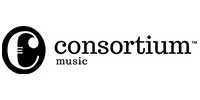I’ve never had Friday nights off.
For decades, when many people are getting ready for a night out; I’m going to work. In the last decade; to Adelaide Town Hall with the ASO, a familiar routine … if a bit disturbed for me by having to always wear black especially if the piece demands a stunning yellow. (I’m also disturbed these days, by shimmering lines of white of tinnitus: an occupational hazard of music careers).
In England in previous decades, I had long journeys on Friday nights. Bournemouth to Plymouth by coach; Reading to Albert Hall, Chepstow to Swansea to Chepstow by car, (hello Dominic!) or coach. By then, we all had babies, who wouldn’t sleep when you finally got home.
Later in Australia, Sydney Opera House to Katoomba; by train or traffic jam.
Pre kids, hubby Richard was also in touring mode: London Contemporary Dance Theatre, Icebreaker, Scottish Ballet, Souled Out, New York, Lithunia, Jacksons Lane… etc. So neither of us had Friday nights- and our free babysitting circles began to notice, when I was often flying off to Europe on the weekend…
When I’d got my first job, Bournemouth Symphony Orchestra, I was fresh from gigging relentlessly with youth orchestras, including the European Community Youth Orchestra, concert bands, including British Youth Wind Band, so busy on Friday nights all through high school and holidays. I went straight to Bournemouth out of Royal Academy and University, without a gap year. Eventually and happily up to London, then Adelaide, via Sydney. Always busy on Friday nights.
I set off purposefully down Hutt Street, short walk from home, looking for a restaurant.
Counting my steps and matching them to a musical piece, in my usual walk mode, first choosing a piece of music to work on in my head, as well as the march. I think best when I’m moving- literally in flow- walking, cycling, swimming, on a plane.
When boarding at Purcell School, they told us not to listen to Rachmaninoff while doing homework, because it should be silence (Despite being a music school). Doesn’t work for me! I need to keep my mind occupied, so it doesn’t wander off with other ideas…
A synesthetic child is not like other children. A synesthete perceives the world in unique ways … Our research (Cawley, V., Cawley, A., 2009) revealed three characteristics of synesthesia, with respect to education:
- Synesthetes learn better in the mode of their synesthesia
- Synesthetes are, consequently, more precocious in areas related to their synesthesia
- Future career choices tend to be in the areas of their synesthetic precocity…
“The Synesthete: A New Type of Gifted Student and How to Teach Them” Cawley, V. International Conference on learner diversity 2010, Kualur Lumpur, Malaysia.
On the way to Hutt Street, thinking about my tasks, I realise that I should schedule ahead on things like publishing blogs, instead of focusing on everything individually, but perhaps it means writing several at once. WHAAT. Hang on. Batch thinking?! Maybe this is a great timesaver: six different narratives at the same time, from the same overall subject. Interesting idea.
On Hutt Street, the pubs are all lit up.
Mixed coloured lights outside shriek a wild clash of tones with the guitarist’s chords and purple lighting. The shiny green pub with the sparkling gold lights though, boasts a fluent singer in Ab major: brilliant, synesthesic jackpot.
But then an ambulance siren suddenly starts and I’m winded by the projectile sound. More ‘tinned stuff oozing out’ (yes, Miriam) from every restaurant- vibrant yellow, blue smears. Life Church, pinpricks of blinding B major! I think of Miriam’s piano work Wet Night on the Highway, inspired by light reflections.
Some soft purple lights outside a dessert place are like being hit on the head, firmly, with a very soft purple cushion. I can’t think of my piece anymore. Too much going on! And I was just getting somewhere with that Duttilleux Sonata. I’ve only been mentally practicing it since 1989.
When I do batch think: I take one idea and explore it, then take another idea out of it and extrapolate that, then the ‘but what if’ always arrives at the same time. In fact, doing several things at once makes all of them easier. Ideally, while listening to music (the right music). I know that when my brain is rushing, in colour, it’s bypassing a lot of steps, going straight to the answer by a quicker route.
Read my blog Switching to Elgar for a great example of how this works!
It was lovely to hear Miriam Hyde describe mental practice on a London bus in 1932. And I bet, in the back of her mind, she was analysing the pitch and speed of the wheels too! This keeps her mind busy, so that it can focus on thinking about something else. (You should read what happened to her at the dentist!!)
If you watch my talk you’ll see how her neurodiversity drove her virtuosity. Like Quincy Jones, Leonard Bernstein, Billie Eillish, George Gershwin, and me, she experienced life and music in colour and musical inspiration was hyperfocussed.
“synaesthesia poses unique questions about sensation, consciousness and the nature of reality..” Oxford Handbook of Synaesthesia.
By encouraging creative thinkers, this is how Silicon Valley was created. Highly motivated, hyper-focussed, enabled to achieve exceptional feats through their modality, synesthetes are often driven to share their emotional experiences in unique personal artistic creations: Duke Ellington, Kandinsky, Billie Eillish, Pharell Williams, Lorde, Quincy Jones. Through a familiarity with these names, we see their aesthetic experiences- describing the wider awareness and acceptance of neurodiversity.
Anyway; I gave up with Hutt Street because the sensory overload created some bad feelings, the special kind of misery of being trapped in a too loud environment, and that puts you off your dinner.
It tastes better in flow.





